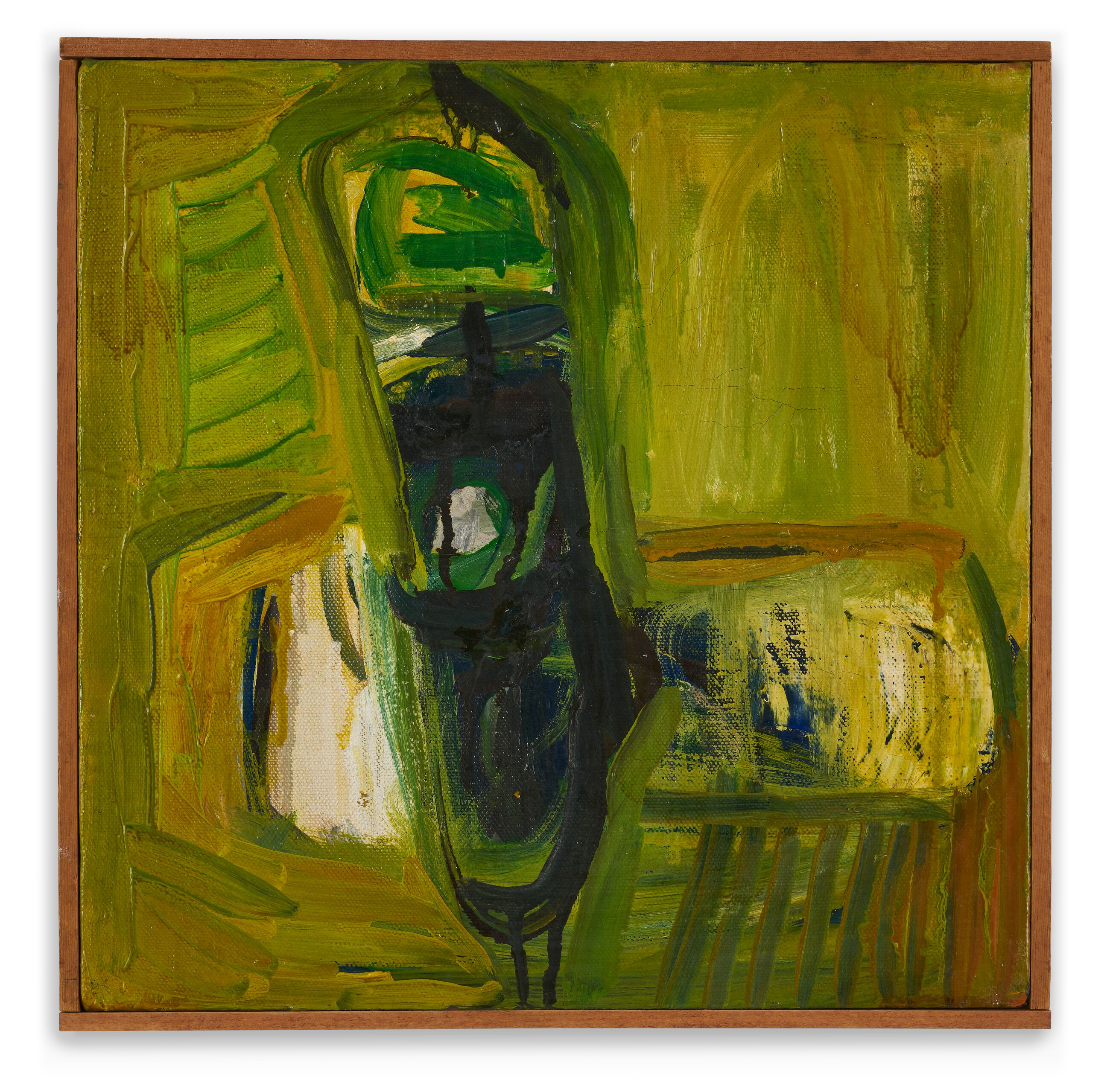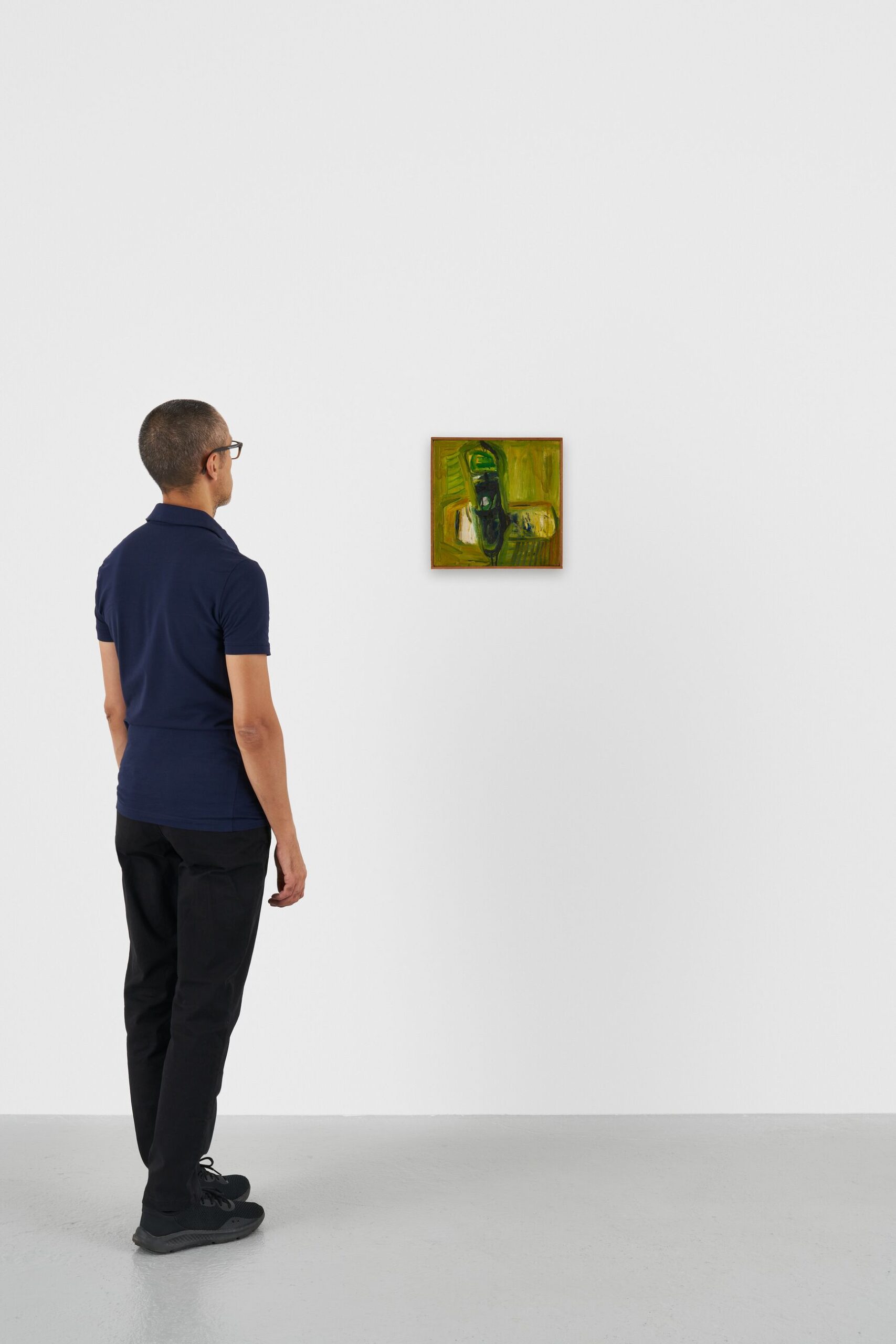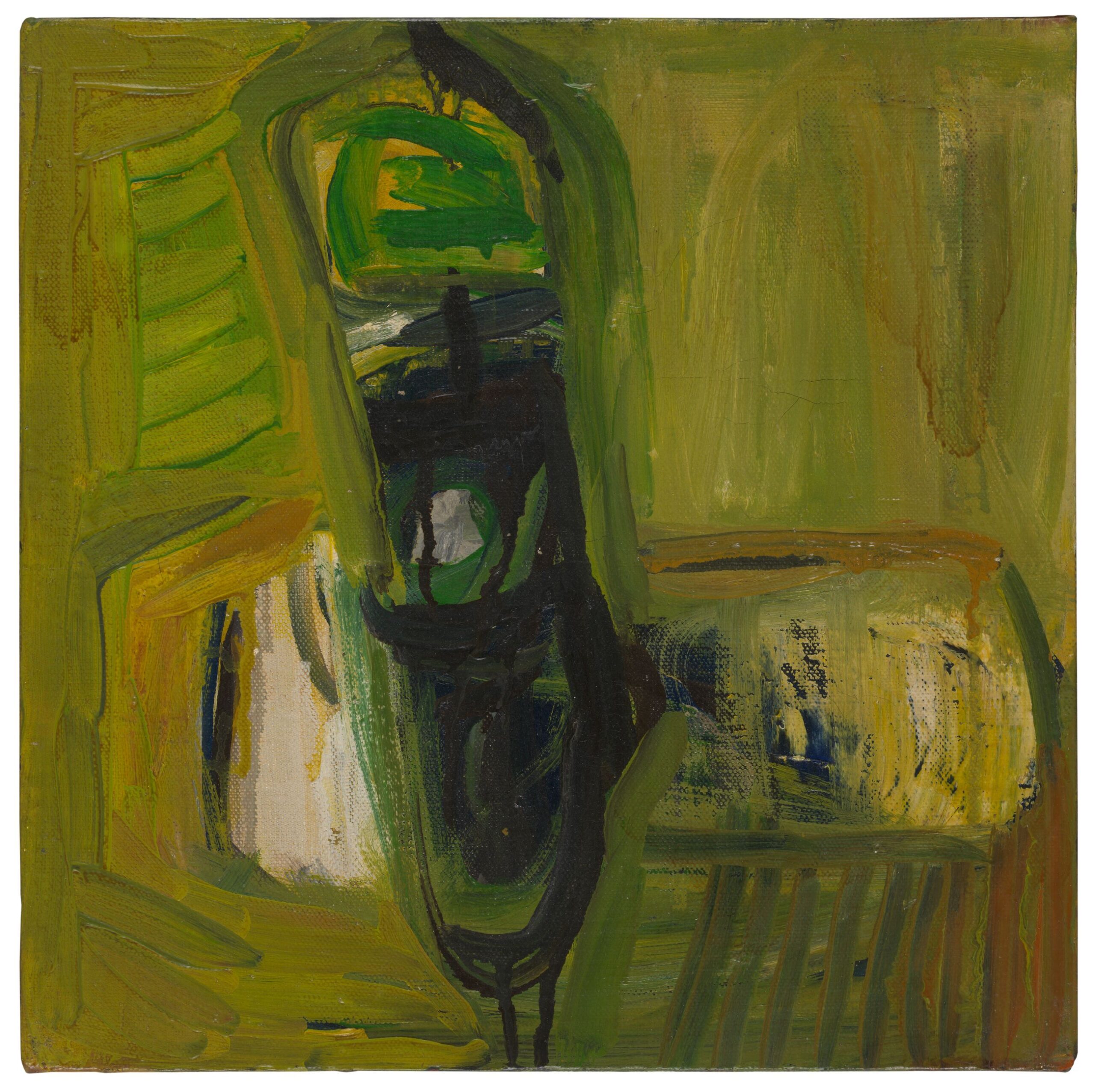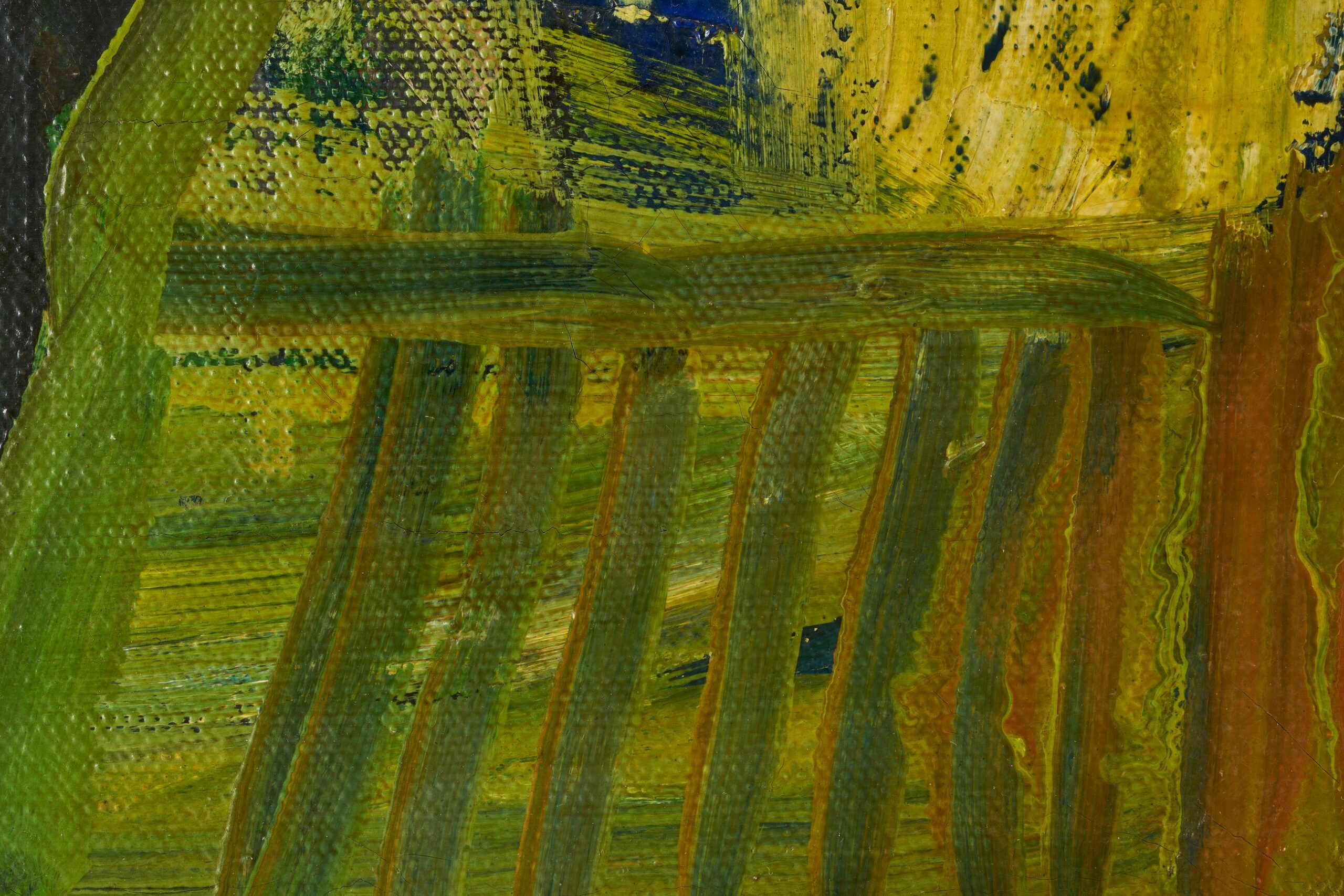Made by Eva Hesse when she was merely 24 years old, ‘No title’ (1960) is an important example from a seminal group of paintings made by the artist during the early 1960s. Having just graduated from the Yale School of Art under the tutelage of Josef Albers and Rico Lebrun, Hesse was living in the West Village, squeezing in studio hours around various part-time jobs. She was also processing the events of her extraordinarily difficult childhood. Hesse’s paintings from this time chart an artist navigating her way into the art world and evolving her artistic identity with the goal of coming to terms with the self through form and material. As Hesse instructed herself: ‘Paint yourself out, through and through, it will come by you alone. You must come to terms with your own work not with any other being.’ ‘No title’ represents a significant transitional moment within Hesse’s life and practice and embodies her aim of making work that could transcend literal associations.
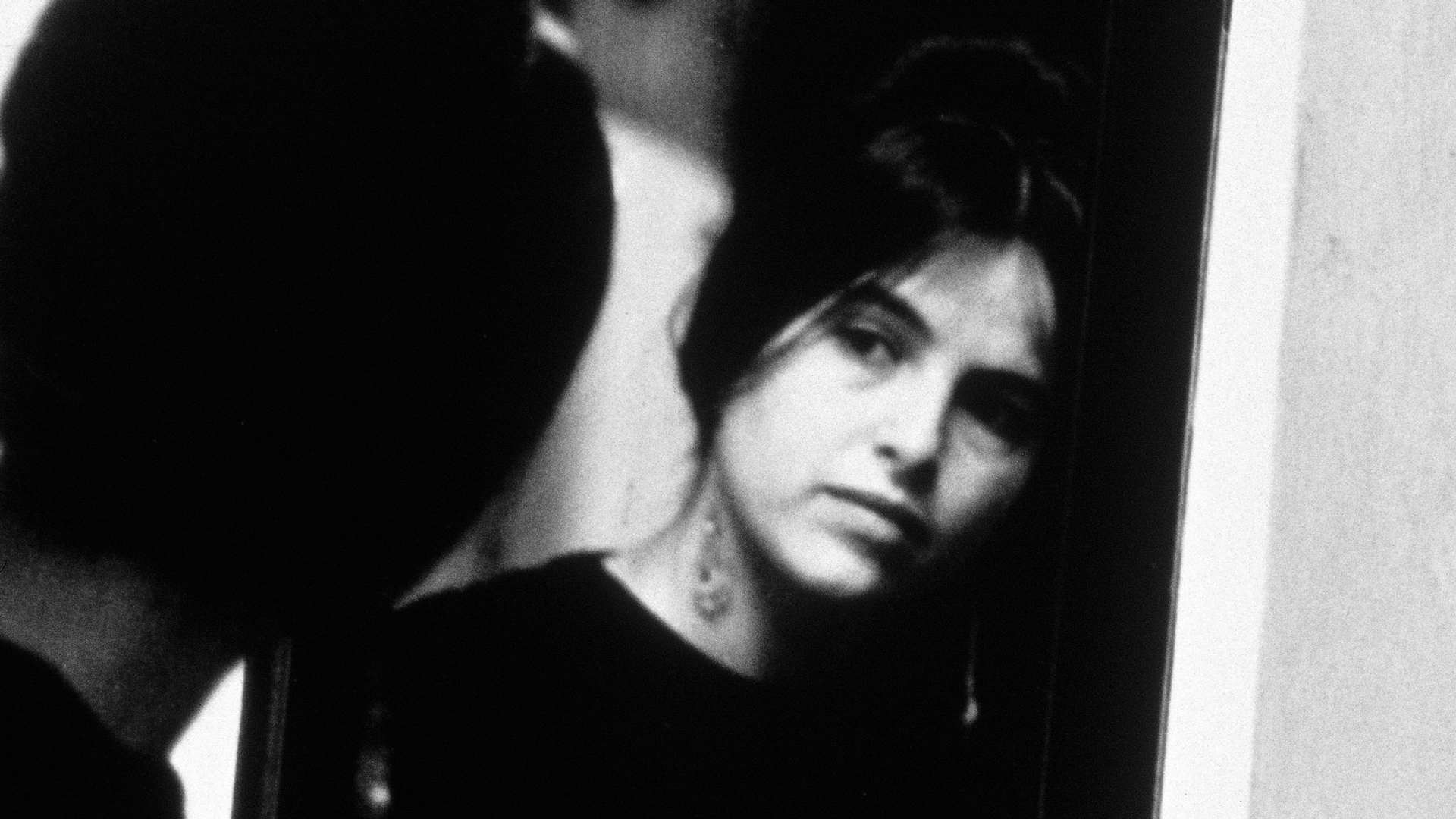
Born in 1936, Eva Hesse was one of the icons of American art in the 1960s, her work being a major influence on subsequent generations of artists. Comprehensive solo exhibitions in the past 30 years as well as a retrospective that toured from San Francisco MOMA to the Museum Wiesbaden and finally to the Tate Modern in London, have highlighted the lasting interest that her oeuvre has generated. Hesse cultivated mistakes and surprises, precariousness and enigma, in an effort to make works that could transcend literal associations. The objects she produced, at once humble and enormously charismatic, came to play a central role in the transformation of contemporary art practice.
Artwork images © The Estate of Eva Hesse. Photo: Jon Etter
Eva Hesse in her Bowery Studio, 1966 © The Estate of Eva Hesse. Photo: Unknown



